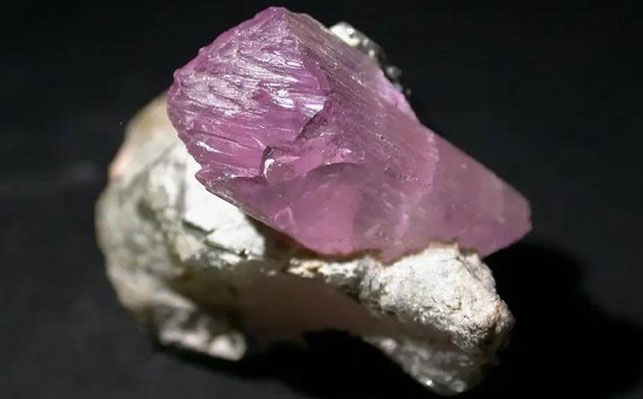
15311826613
Click to add WeChatIn the process of lithium resource development and utilization, the processing and purification of lithium-containing minerals such as spodumene and lepidolite have long been carried out. At present, among the more than 130 known lithium-containing minerals, the processing and purification of lithium-containing minerals such as spodumene and lepidolite has long been carried out, and only a few silicate and phosphate minerals have economic value. This article takes spodumene (chain silicate) as an example to introduce its lithium extraction technology.

Spodumene (LiAL[Si2O6]) has a high Li content (Li2O6%~9%) and is the main mineral source of lithium. Spodumene is a chain silicate mineral belonging to the monoclinic pyroxene mineral group, and silicon dioxide exists in tetrahedral form.
Due to the high stability of Li2SO4 in aqueous systems and its solubility, sulfation is one of the most commonly used technologies for processing spodumene to recover lithium. Other impurities (AL, NA, Mg and K) that are usually present in spodumene also form soluble compounds during the sulfation process, but lithium is slightly soluble in carbonate media, which helps to precipitate Li2CO3 from Li2SO4 dissolved in water.
For example: spodumene mineral is crushed and ground into a suitable particle size, then mixed with alkali metal sulfate (NA2SO4/K2SO4) and treated at 850~1200℃ to maximize lithium recovery. During the calcination process, Li is replaced by NA in NA2SO4, and Li2SO4 is formed through an ion exchange reaction (1170℃). Since the melting point of K2SO4 is higher than that of NA2SO4, a higher temperature is required for the ion exchange reaction to occur, but at higher temperatures, silica will decompose, resulting in a reaction that is not conducive to lithium recovery.
In the carbonation treatment, spodumene is mixed with NA2CO3 and heated at 525~675℃, so that the NA atoms of NA2CO3 replace the Li atoms, forming lithium carbonate and sodium aluminum silicate. In the presence of CO2, the roasted product is leached with water to precipitate and separate lithium in the form of Li2CO3.
Before Li2CO3 is produced, the formation of LiHCO3 is an important step. Since the solubility of Li2CO3 in water is very low, CO2 gas needs to be injected to convert it into LiHCO3 with higher solubility. Lithium bicarbonate exists at pH 6-8. High-pressure sterilization of the system in the presence of CO2 at 250°C can increase the solubility of LiHCO3 in the solution, thereby improving the process efficiency.
Chlorination is also an effective purification method because CL2 can react with metal oxides and silicates to form water-soluble chlorides. The chlorination treatment of lithium-containing ores can selectively extract lithium at high temperatures, but the process is complex and requires highly corrosion-resistant equipment. When the Si-AL-Li-O-CL system reaches equilibrium during the chlorination process, there is the possibility of forming solid or liquid LiCL and other solid products of AL and Si in different phases. In addition, in a fixed bed reactor, the chlorination of spodumene concentrate (7.25% Li2O and 2% impurities Fe, CA, Mg) was carried out under the conditions of a total flow rate of 100ml/min, a CL2 partial pressure of 0.2~1.0Atm (about 0.02~0.1MPA) and 1000~1100℃.
Lithium recovery is carried out by leaching β-spodumene in liquid hydrofluoric acid. Under reasonable leaching conditions (temperature 75℃, 7% HF, stirring speed 330r/min, reaction time 10min), up to about 90% of Li can be recovered. Si and AL dissolved in HF are removed by reacting with NAOH to form NA2SiF6 and NA3ALF6 precipitates. At the same time, LiF is also converted into a soluble hydroxide form (LiOH) and evaporated until the lithium concentration reaches 20g/L. Finally, the solution is heated to 95℃ for 20min to precipitate lithium in the form of carbonate, and the unwashed Li2CO3 precipitate is obtained with a purity of 98%.